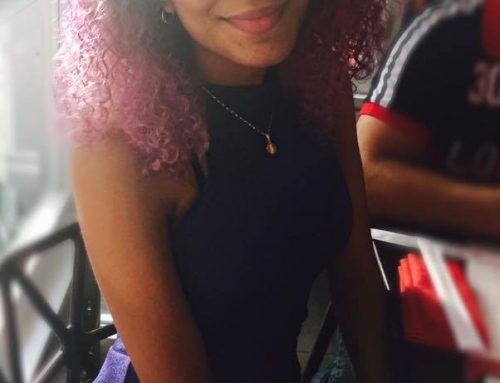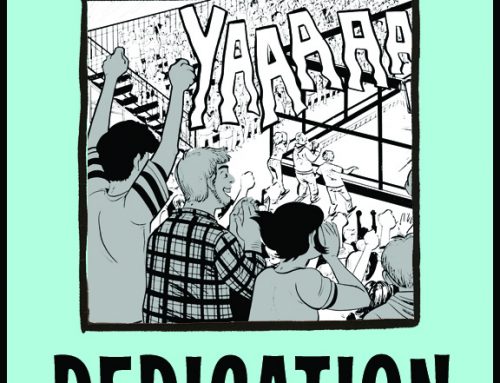test heading
(Adventures in Cartooning and sequels)
Figuring out whether or not a book should have a sequel can be a challenging task for publishers. There are lots of creative questions to ask: does the book work best as a stand-alone? Should the author take their future projects in a different direction? Will a sequel be as fulfilling and as wonderful as the first book? Will the two books complement each other well?
Besides the exciting publishing questions, there’s also the business end of things: did the first book sell well enough that a sequel makes sense?
One of the universal truths of publishing is that the first book in any series is 99.9% of the time always going to sell the best. That’s because the best jumping-on point for a series — even if you’re hearing about Harry Potter for the first time when Harry Potter and the Deathly Hallows comes out, probably you’re still going to want to start at book one: Harry Potter and the Sorcerer’s Stone. And a percentage of people will pick up that book, not like it, and not pick up any of the rest of the books.
So you’re not necessarily going to see all the sales for the first book at the point when you’re publishing the first book. In fact, every time you publish a sequel, that first book will get discussed and re-ordered and more people will hear about it. So any sequels that an author writes act as a promotional tool to sell their other books (as well as being great stories in and of themselves, of course).
That’s pretty cool! Because what it means is that the more books you publish by an author, the more of all their books you’ll sell.
But when a publisher is at the point of considering a sequel, they only have one thing to look at: those first book sales, all by themselves.
So the best way that you, as a consumer, can encourage a publisher to publish a sequel is to put your money where your mouth is: buy a copy.
If you’re a particularly savvy consumer, you can also advocate for books you love in your sphere of influence: tell your friends (both in person and on social media) that they should buy the book, too. Ask your local library to buy a copy, and suggest they include it in any reading programs (like summer reading). Offer to write a book recommendation for your local bookstore. Buy copies for friends and relatives for birthdays and holidays.
It would be wonderful if all the books we love had sequels and sequels and more sequels! But sometimes, it takes a little reader advocacy to get there.






The premise of this blog is very compelling. The decision to make a sequel in a series should be based upon the sales of the first book in the series. That is not how First Second does it, though. Thanks to interesting and informative blogs like “Why Publishing Scheduling is Not an Exact Science” and “The Publishing Process — A Timeline” (many thanks for these!) we know that there is a long lead time in terms of years between proposal and finished book. Yet the two ongoing series at First Second (Zita the Spacegirl and the Olympians series) were clearly green-lighted before the actual sales data for the first book in the series was available. One needs only look at the BookScan charts of the last few years to see the trend.
AUTHOR TITLE YEAR
AGUIRRE JORGE GIANTS BEWARE 2013
BROSGOL VERA ANYAS GHOST 2011
BROSGOL VERA ANYAS GHOST 2012
BROSGOL VERA ANYAS GHOST 2013
GUIBERT EMMANUEL PHOTOGRAPHER 2009
HATKE BEN LEGENDS OF ZITA THE SPACEGIRL 2012
HATKE BEN LEGENDS OF ZITA THE SPACEGIRL 2013
HATKE BEN ZITA THE SPACEGIRL 2011
HATKE BEN ZITA THE SPACEGIRL 2012
HATKE BEN ZITA THE SPACEGIRL 2013
KNISLEY LUCY RELISH MY LIFE IN THE KITCHEN 2013
O’CONNOR GEORGE HADES LORD OF THE DEAD 2012
O’CONNOR GEORGE POSEIDON EARTH SHAKER 2013
O’CONNOR GEORGE ZEUS KING OF THE GODS 2010
O’CONNOR GEORGE ZEUS KING OF THE GODS 2011
O’CONNOR GEORGE ZEUS KING OF THE GODS 2013
OTTAVIANI JIM FEYNMAN 2011
OTTAVIANI JIM FEYNMAN 2012
OTTAVIANI JIM FEYNMAN 2013
OTTAVIANI JIM PRIMATES 2013
POPE PAUL BATTLING BOY 2013
SIEGEL MARK SAILOR TWAIN OR THE MERMAID IN 2012
YANG GENE LUEN AMER BORN CHINESE 2007
YANG GENE LUEN AMER BORN CHINESE 2008
YANG GENE LUEN AMER BORN CHINESE 2009
YANG GENE LUEN AMER BORN CHINESE 2010
YANG GENE LUEN BOXERS SAINTS BOXED SET 2013
Clearly, the relationship between initial sales of the first book and decision to green light the second book in the series depends more upon intuition and risk taking and less upon initial sales.
Actually, the number “99.9%” is somewhat inflated for people who start a new series. I bought Curses! Foiled Again by Jane Yolen and then went back and bought Foiled by Jane Yolen based upon the strength of the second volume in the series.
There are a couple of issues that this blog on sequels does not touch on. The first issue is where the latest volume in a series is weak and the reader drops off from buying more volumes. The second issue is where a long running series has a weak volume or two and the reader loyally continues to buy volumes because – overall – the series is quite good.
Foiled is a good example of a weak volume diminishing demand for a sequel. In the series of Foiled books, the first book, Foiled, is excellent. The second book was good but the villain was disappointing. I would probably think twice about buying the third volume in the series.
The manga series Claymore is a good example of a series with a couple of weak volumes in an otherwise good series. Volumes 21 and 22 felt like they were off spine. Subsequent volumes have returned the focus to the major characters that I care about and I was glad that I stuck it out and stayed with the series.
The main difference between the two issues is that is am not emotionally vested in the Foiled series whereas I have been reading the Claymore series for several years and care about the characters.